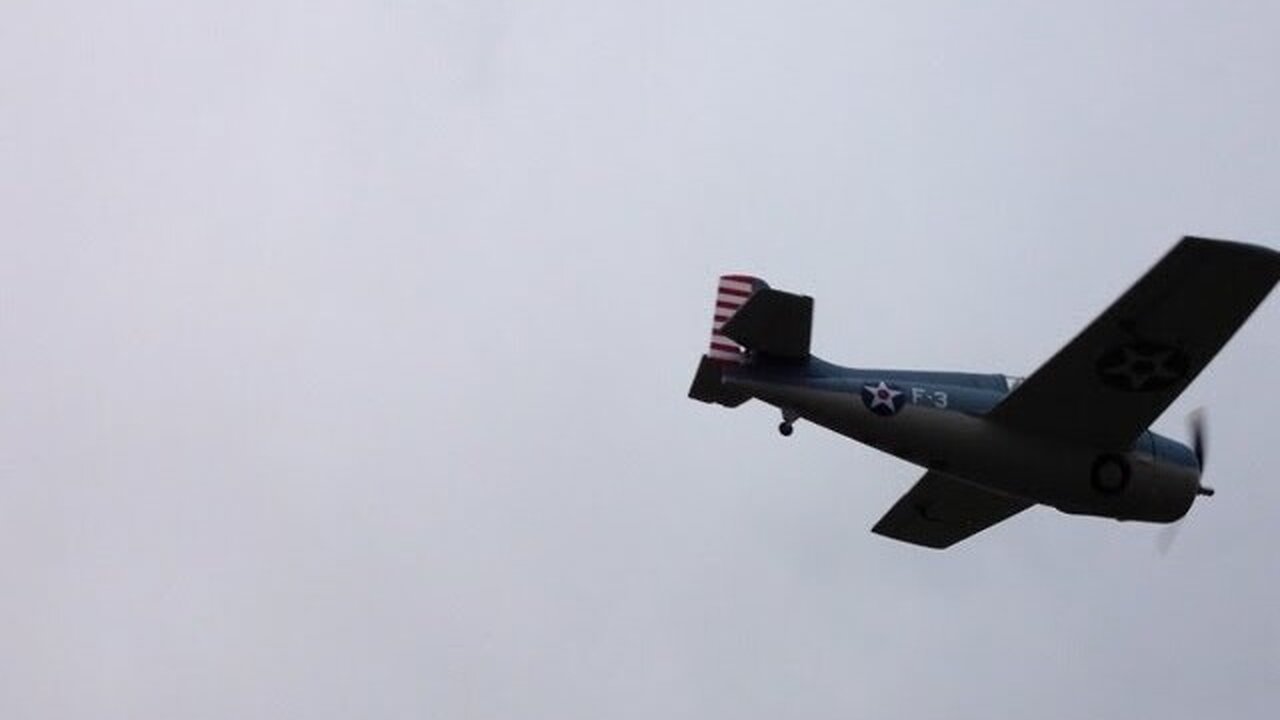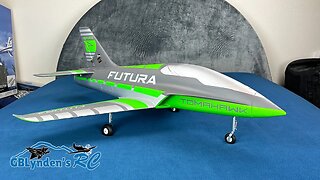Premium Only Content

Parkzone F4F Wildcat Stunts, Rolls, and Tricks (Stock set-up)
The F4F Wildcat from Parkzone is not only an amazingly scale flying plane, but it also has the ability to do some amazing stunts and tricks. I do my best in this video to do those capabilities justice. This is also an 100% stock set-up during most of this video.
Link to plane: https://amzn.to/2IgOeQB
The links in this description are affiliate links. They give me a small commission on sales which helps support the channel and keep it independent: https://www.amazon.com/shop/gblyndensrc
This video was made using the equipment noted below and can be purchased on Amazon through my Amazon Affiliate links below:
RC Equipment Used In This Video:
- Parkzone Wildcat: https://amzn.to/2IgOeQB
- Spektrum DX6 Radio: https://amzn.to/2RgoDes
From Pearl Harbor through 1942 the F4F Wildcat was the only U.S. fighter in the Pacific theater capable of thwarting the advances of Japan's naval air forces. And though it was slower and less maneuverable than the vaunted Zero, its heavier armor, self-sealing fuel tanks and rugged airframe could often help a skilled pilot overcome this performance gap and live to fight another day.
ParkZone brings the legendary Wildcat to life with this great flying Bind-N-Fly park flyer modeled after a plane flown by Lieutenant Commander Edward "Butch" O'Hare -- the U.S. Navy's first flying ace. Scale touches include a realistic paint scheme, simulated engine cylinders and cowl flaps, molded wheels tucked into the fuselage and more. Its flight performance is equally impressive thanks to the full 4-channel control and ample power provided by its 480 brushless motor and the included 3S 1300mAh Li-Po battery.
The Grumman F4F Wildcat was an American carrier-based fighter aircraft that began service with both the United States Navy and the British Royal Navy (as the Martlet) in 1940. First used in combat by the British in Europe, the Wildcat was the only effective fighter available to the United States Navy and Marine Corps in the Pacific Theater during the early part of World War II in 1941 and 1942; the disappointing Brewster Buffalo was withdrawn in favor of the Wildcat and replaced as units became available. With a top speed of 318 mph (512 km/h), the Wildcat was outperformed by the faster 331 mph (533 km/h), more maneuverable, and longer ranged Mitsubishi A6M Zero. But the F4F's ruggedness, coupled with tactics such as the Thach Weave, resulted in an air combat kill-to-loss ratio of 5.9:1 in 1942 and 6.9:1 for the entire war.
-
 5:51
5:51
GBLynden's RC
1 year agoDetailed Unboxing | FMS Futura 64mm EDF Sport Jet
263 -
 LIVE
LIVE
Akademiks
1 hour agoDiddy Trial Day 25: Brendan Paul aka Diddy Dr*g Mule to take the stand. 1 More Witness left. 2/30
2,279 watching -
 1:04:44
1:04:44
Timcast
1 hour agoTrump DENIES Peace Talks With Iran, Polymarket Says US WILL Intervene
54.2K63 -
 LIVE
LIVE
The Charlie Kirk Show
1 hour agoWar, or Peace? + No Kings Aftermath | Sen. Mullin, Friedman | 6.17.25
4,305 watching -
 1:58:53
1:58:53
Steven Crowder
3 hours ago🔴 Border Czar Tom Homan Joins Crowder: Will Trump Actually Fulfill Deportation Promises
239K183 -
 LIVE
LIVE
LFA TV
14 hours agoLFA TV ALL DAY STREAM - TUESDAY 6/17/25
3,278 watching -
 LIVE
LIVE
Flyover Conservatives
12 hours agoImplications of US/ISRAEL/IRAN Escalation on Precious Metals - Dr. Kirk Elliott; Big Pharma’s Youngest Customers: The Rise of Medicated Childhood - Joy Pullmann | FOC Show
311 watching -
 LIVE
LIVE
TheAlecLaceShow
1 hour agoTrump WARNS To Evacuate Tehran | Exits G7 Early | Guest: Dr. Stella Emmanuel | The Alec Lace Show
78 watching -
 59:27
59:27
The Rubin Report
2 hours agoTrump Makes Unexpected Insulting Attack on Tucker Carlson at Press Conference
25.6K107 -
 LIVE
LIVE
The Shannon Joy Show
3 hours ago🔥🔥Do You Ever Wonder If ALL Our ‘Leaders’ Are Being Blackmailed? The Current COVID Gaslighting With Special Guest Debbie Lerman’🔥🔥
303 watching